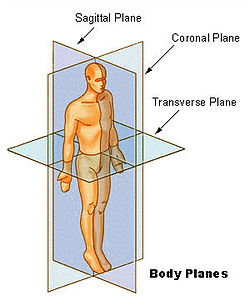 *WARNING: This article is not for the novice. I am not trying to insult the novice because we all are novices in something. This is a warning to inform you that this article may be too advanced for you at this time, so I would advise you to start first by signup for the FREE 3 Part Series on 30 Days to 5mph!
*WARNING: This article is not for the novice. I am not trying to insult the novice because we all are novices in something. This is a warning to inform you that this article may be too advanced for you at this time, so I would advise you to start first by signup for the FREE 3 Part Series on 30 Days to 5mph!
Rotational pitching has become more popular as rotational hitting has grown in popularity. The problem is studies do not show rotational pitching, as we perceive rotation to be more in transverse plane, as an effective model for the high velocity pitcher (3). Not only are studies showing the negative correlation of the transverse rotation to pitching velocity but it is also linked to more forces being added to the arm which can lead to an arm injury.
In this article, you will learn how taking a predominately transverse rotational approach to your pitching delivery will reduce pitching velocity. This means a rotational or torque style approach will NOT help you reach your top velocity. You will learn how to be more linear than rotational or coronal to sagittal without losing the key principles of rotation. You will also learn how to train your body to most effectively enhance these movements through the planes of the body.
The Science Behind Rotational Pitching
 Most of the ways to measure the pitcher is in angular velocity through the planes of the body. This means the rate of change of angular position of a rotating body through the coronal, transverse and sagittal planes. View the picture here labeling these planes of the body.
Most of the ways to measure the pitcher is in angular velocity through the planes of the body. This means the rate of change of angular position of a rotating body through the coronal, transverse and sagittal planes. View the picture here labeling these planes of the body.
Rotation is very much a critical aspect of pitching but the question here is what causes this rotation and does all rotation come from the transverse plane, like how we tend to think of hitting or swinging a bat or club?
One of the most interesting pieces of scientific data on pitching biomechanics actually comes from the famous American Sports Medicine Institute (ASMI) case study on max distance long toss. If you haven't learned about this study then you obviously have not spent much time on this site. Here is some articles to get you caught up:
In the case study called, Biomechanical comparison of baseball pitching and long-toss: implications for training and rehabilitation, it records the changes in mechanics and forces on the arm as throwing distance increased from the mound to around 300 feet (2). What made this case study even more valuable to the pitching community was the recording of throwing velocity at the same time which allows us to look even deeper into the mechanics of the high velocity pitcher.
With all of this great information recorded within the ASMI case study, it tells more of the story than just that max distance throws are the most inefficient throws you can make which was the final conclusion of the study. It also tells the story that the loss of forward trunk tilt in the sagittal plane and the increase of pelvis angular velocity in the transverse plane occurred when the throwing distances increased and the throwing velocity decreased. This means pelvis rotation speeds in the transverse plane actually correlated to a loss in throwing velocity and an increase in forces on the arm. Here is an excerpt from the case study defining these changes in kinematics during max distance throws:
As throwing distance increased, the player seemed to rely less on rotation in the sagittal plane (less forward trunk tilt and less knee flexion) and more on rotation in the transverse plane (greater pelvis angular velocity, upper trunk angular velocity, elbow flexion, and elbow extension velocity). Longer throws also produced greater elbow and shoulder torques in the arm-cocked position.
It is important to note that as max distances increased from 180 feet to roughly 300 feet, throwing velocity decreased and forces to the arm increased. This means when the angular velocity of the pelvis in the transverse plane was at its highest, the throwing velocity in this study was at its lowest and the forces on the arm where at its highest. That is a game changer and really changes how we must perceive the high velocity pitcher as more coronal and sagittal movers than transverse for both performance and injury prevention.
Transverse Rotational Pitching
Transverse rotation would be mainly hip and trunk rotation. This means the approach of the delivery would be to first focus on driving the entire delivery from this plane. This is more like how a purely rotational hitter initiates his swing. The hitter will rotate the drive leg to rotate the hips which rotates the shoulders and bat. This is usually referred to as Rotational Hitting.
This same approach with pitchers will not have the same effect because with pitching you do not have the added leverage of the bat which allows you to get away with more inefficiencies in your mechanics. Therefore first rotating in the transverse plane in the pitching delivery will reduce the stride length which is the product of a predominate coronal plane movement and it will reduce forward trunk tilt and front leg extension as stated in the ASMI long toss study because these are linear reactions to the coronal force production in the sagittal plane.
The problem is most pitching coaches or even strength coaches predominately coach and train rotation in the transverse plane which in the ASMI case study would work against the efficient mechanics of throwing off of the mound or even short distances on flat ground when throwing velocity was at it highest with the lowest amounts of torque on the arm.
The ASMI Long Toss study paints the picture that the more you work to rotate the hips and even torso in the transverse plane the more this forces your trunk to stay upright as defined here in the case study:
As throwing distance increased, the player used a more inclined (more upward trunk tilt) position at foot contact.
So, it would make sense to actually NOT work to rotate the hips or the torso in the transverse plane if you want to increase pitching velocity. A great example of this would be watching Aroldis Chapman or Billy Wagner before he retired. They both have explosive lateral drives in the coronal plane which convert into optimal hip to shoulder separation through the transverse plane. These linear forces then jump into the sagittal plane as forward trunk tilt and maximum external rotation which is represented in the picture above. A delivery like these two pitchers proves that the coronal movement and not the transverse rotation significantly drives the movements in the sagittal plane.
Coronal to Sagittal Pitching AKA 3X Pitching
The ASMI case study is not the only study showing this negative correlation of transverse rotation to pitching velocity. The case study called, Kinematic and kinetic comparison of baseball pitching among various levels of development, found that maximum pelvis velocity was actually greater among youth level pitchers than professional level pitchers (2). Yes, youth pitchers had faster hip rotation speeds than professional pitchers and threw a lot slower. The study did show a very small increase in both upper torso rotation and forward trunk tilt from the youth to the professional level. The conclusion that was made by this study was that mechanics did not change much through the levels of the game as velocity increased significantly; physical development was the key factor. The study does show that hip rotation speeds negatively correlated with throwing velocity as they decreased while pitching velocity increased.
The only other study that gives us more insight into the effects of transverse rotation on pitching velocity is the study called, Kinematic Comparisons Of Different Pitch Velocity Groups In Baseball Using Motion Model Method, which found that hip rotation angular velocity was at the same level, between the high velocity and low velocity pitchers of the same age group, but the hip rotation of the high velocity pitcher peak earlier in the delivery (1). This could be an indication that the coronal movement of the stride had more energy driving the transverse movement of the hip rotation earlier into front foot strike which also enhanced the torso angular velocity of the high velocity pitcher as a result of these c0ronal forces moving into the sagittal plane.
We have now learned, without a doubt, that the movement pattern of a high velocity pitcher is definitely not a predominate rotation in the transverse plane as proven in the three case studies (1,2,3), so the question now becomes what is the movement pattern? The answer is the movement pattern of the high velocity pitcher is first a coronal or lateral movement, through the stride, transitioning through the transverse plane, as hip to shoulder separation, into the sagittal plane of front leg extension and forward trunk tilt.
This is more evidence that 3X Pitching is the superior approach to increase pitching velocity. Aligning the Force Vector to support a peak of ground reaction forces through 3X into front foot strike, as to enhance shoulder separation through separating the coronal plane to sagittal plane movements, so the sagittal plane movements are at their maximum, is the most effective way to reach your top velocity.
Training The High Velocity Pitcher Through the Body Planes
There are many strength coaches who believe if your sport is specific to movements predominately in one plane then you must always train in that plane. This would be ignorant in my book because your muscles have no idea what plane they are moving in. Your central nervous system does, which means we should be able to convert the athleticism from one plane into the other through motor coordination training and this usually is the reason why strength coaches are the ones claiming that you can not convert athleticism between two different planes. Most of them have no concept of how the motor coordination of the high velocity pitcher is taught.
Now that we know and have proof that the high velocity pitcher moves through all planes of the body we must train through all of these planes. It takes a ton of athleticism to move efficiently through all of the planes of the body. This is why I believe that the high velocity pitcher is one of the greatest athletes in all of sports.
Here is a list of ways to train the high velocity pitcher which is built into the 3X Pitching Velocity Program:
- Build maximum power production in a vertical movement because power production is trained to higher levels here.
- Once this maximum power is developed then train the motor coordination to convert this power into the coronal plane or the lateral movement and the sagittal plane.
- Rotation in the transverse plane does not need to be trained as much because in the high velocity pitcher it is more of a reaction to the transition between the coronal plane movement into a sagittal plane movement.
- You do want to train rotation in the transverse play to enhance the stretch-shortening cycle, but you do not want to train your body to generate power in this plane.
Conclusion
This article hopefully helps those who have a good grasp of 3X Pitching and are working to take it to the next level. It should also help to give you a better understanding of the dominant movements that are driving the high velocity pitcher. If you are confused or need more information, please post your comments below to start the conversation.
Reference:
- ISBS 2002, Caceres - Extremadura - Spain - Kinematic Comparisons Of Different Pitch Velocity Groups In Baseball Using Motion Model Method - Keizo Takahashi1, Norihisa Fujii2, and Michiyoshi. - Doctoral Program in Health and Sport Sciences, University of Tsukuba, Japan. Institute of Health and Sport Sciences, University of Tsukuba, Japan.
- Fleisig GS, Barrentine SW, Zheng N, Escamilla RF, Andrews JR. - Kinematic and kinetic comparison of baseball pitching among various levels of development. - American Sports Medicine Institute, Birmingham, AL 35205, USA. - J Biomech. 1999 Dec;32(12):1371-5.
- Fleisig GS, Bolt B, Fortenbaugh D, Wilk KE, Andrews JR. - Biomechanical comparison of baseball pitching and long-toss: implications for training and rehabilitation. - American Sports Medicine Institute, 833 St. Vincent’s Drive, Suite 100, Birmingham, AL 35205, USA. - J Orthop Sports Phys Ther. 2011 May;41(5):296-303.




Brent, this study is awesome. I watch your videos and tips daily. I currently train my brother using your videos. I intend to purchase your program very soon. He is 8th grade, 5’7″ 140lbs. His average fastball is at 75mph and tops off at 78mph. Your program IS the best.
Thanks for the support! Please bring him down to a 3X VCamp if you can and I will certify you as a 3X Coach.
Hey Brent just an update. My brother is now a HS freshman. 5’8″ 15lbs. We purchased the velopro harness. His fastball is sitting 81-82 and reaches 84. Again your program IS the best.
Can your theory and application be applied to QB’s. I would think the stride off the mound has a lot to do with the degree of transitional rotation. Curious as pitchers and QBs are throwing athletes but it seems your infielders are closer to the stride.
Ball velocity was constant across all throwing conditions in study 3. Not sure where you got “as max distances increased from 180 feet to roughly 300 feet, throwing velocity decreased” form. This was what was actually said in the study “No significant differences were detected among throw types in ball velocity.”
To me it just shows different mechanics for different context of throws.